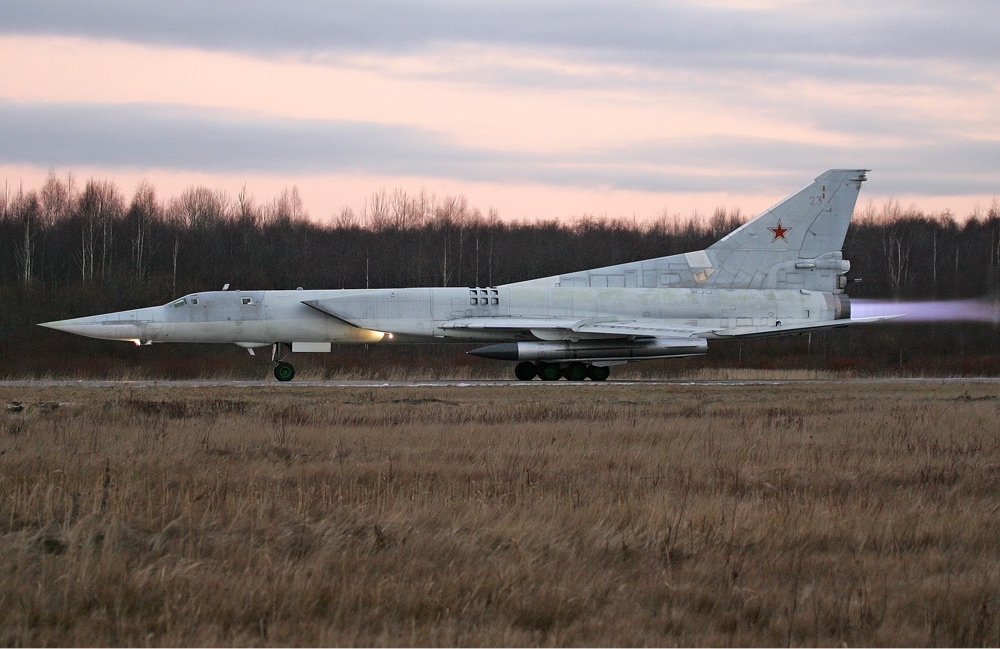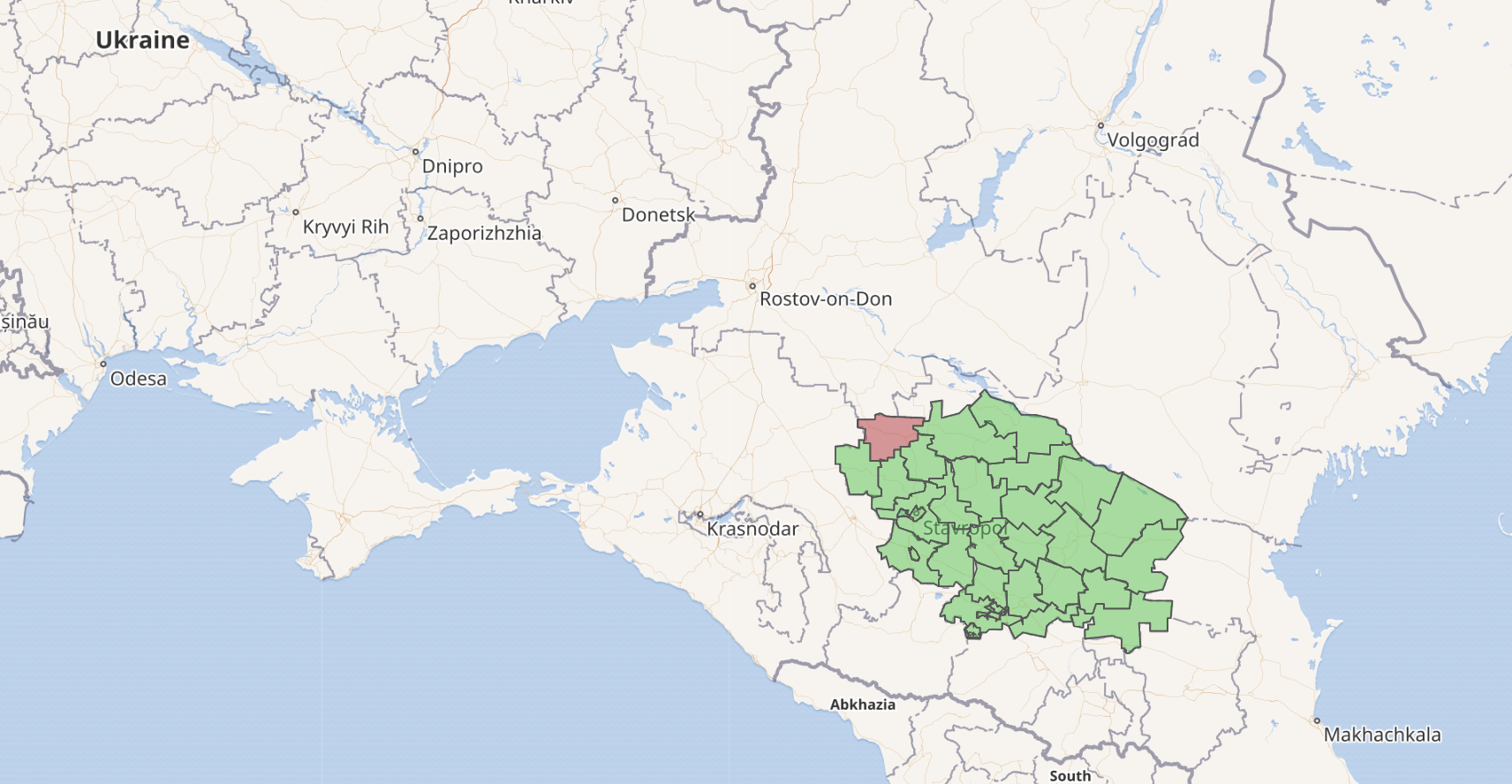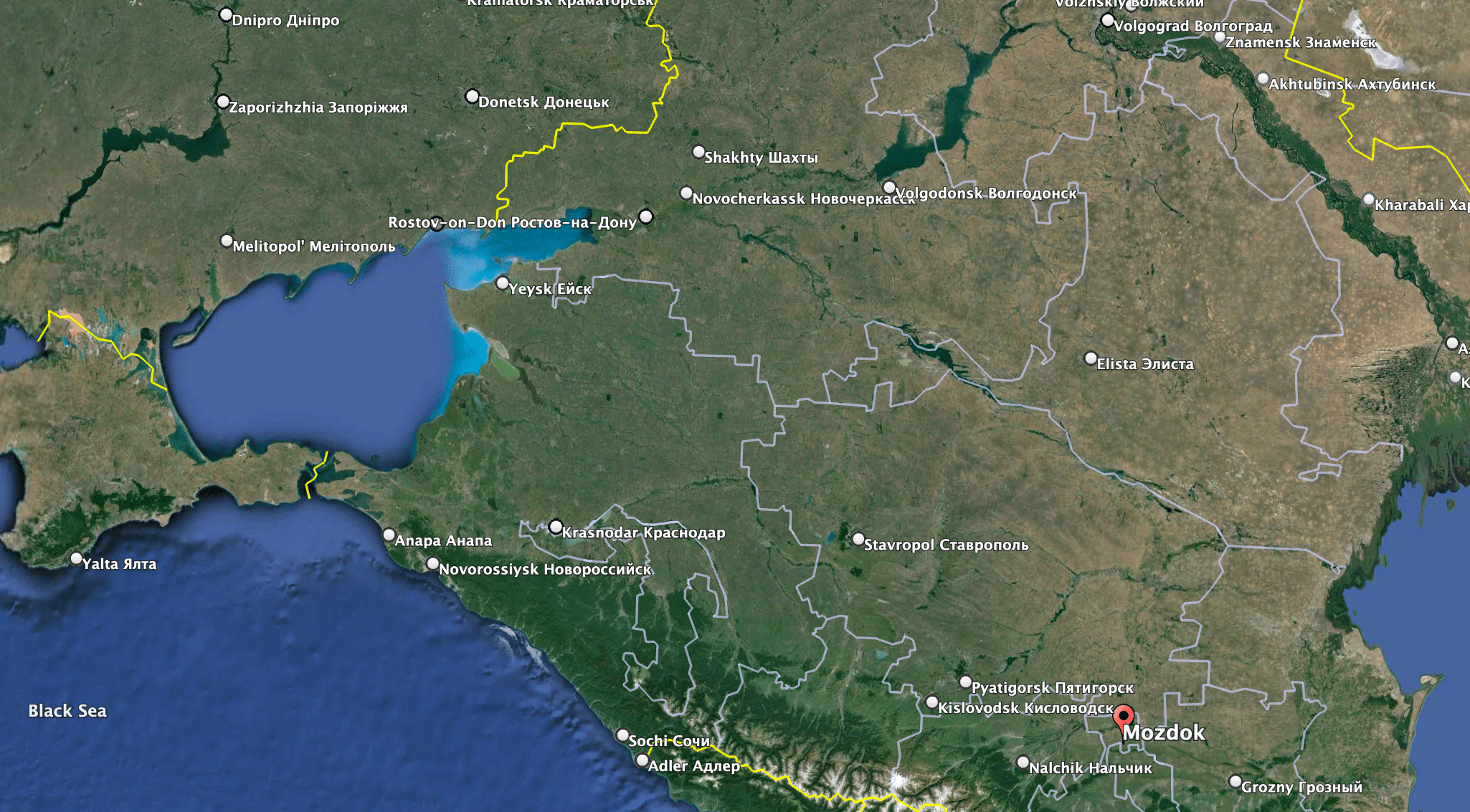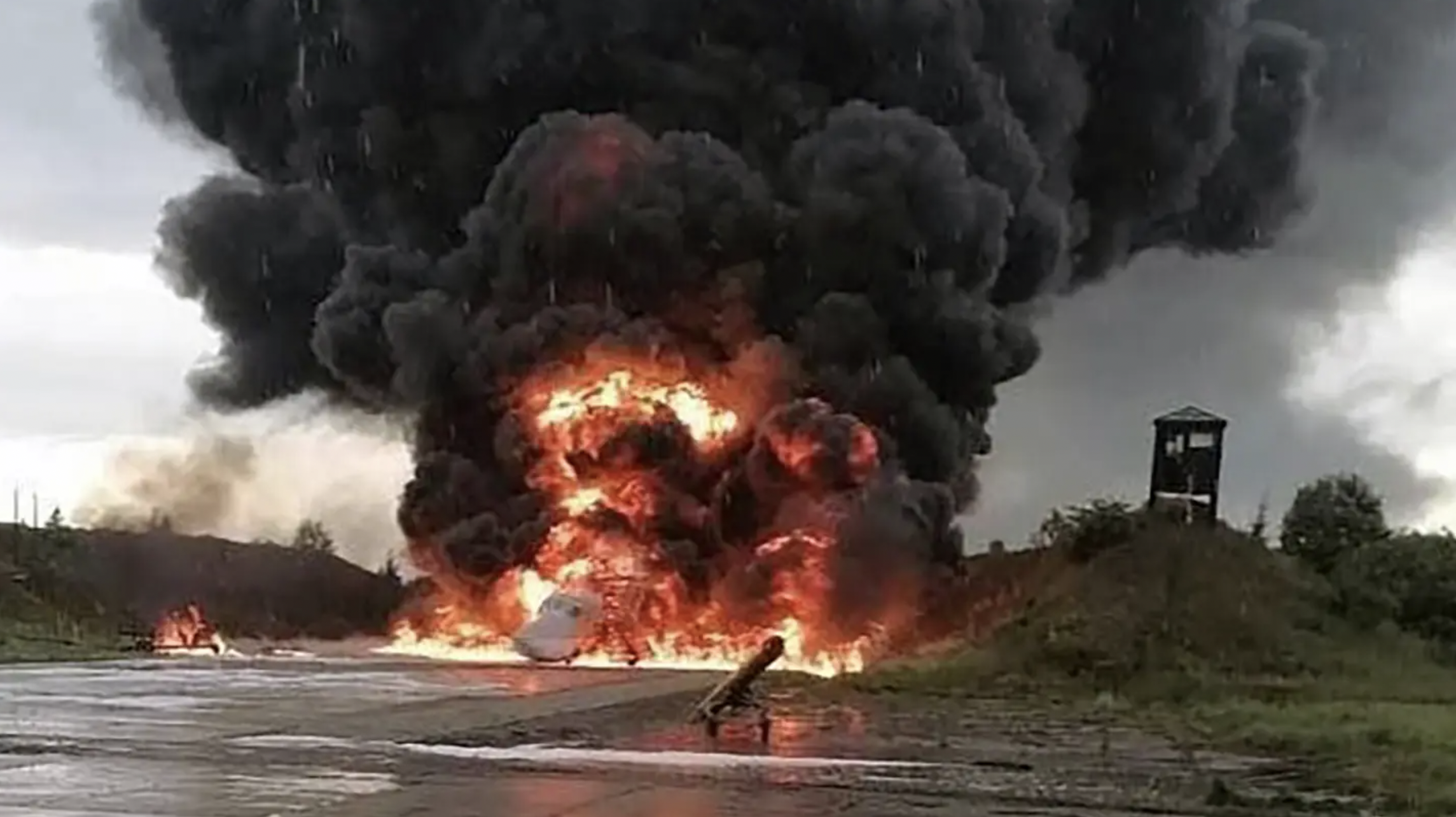Ukraine says that it shot down the Russian Tu-22M3 Backfire-C bomber that crashed today in the Stavropol territory in southern Russia. Speaking exclusively to TWZ, Lt. Gen. Kyrylo Budanov, the head of the Ukrainian Ministry of Defense’s Main Directorate of Intelligence (GUR), said that the Russian bomber was brought down by a Soviet-era S-200 (SA-5 Gammon) long-range surface-to-air missile.
If that’s the case, it would be an unprecedented event, with Ukraine never having previously been responsible for the destruction of a Tu-22M3 — or any other Russian long-range bomber — in the air.
A video that appeared on social media shows the aircraft spiraling toward the ground, in an apparent flat spin, with its rear fuselage on fire. Subsequent photos and a video show the wreckage of the bomber on the ground, still burning.


Soon after imagery of the incident appeared, Ukraine claimed that it was behind the destruction of the bomber.
On its website, the GUR stated that the bomber “was shot down as a result of a special operation […] in cooperation with the Ukrainian Air Force.”
The GUR said the Tu-22M3 in question was returning from a missile attack against Ukraine when it was shot down “at a distance of about 300 kilometers [186 miles] from Ukraine by the same means that were previously used to shoot down the Russian A-50 long-range radar detection and control aircraft.”
“As a result of the damage, the bomber was able to fly to the Stavropol territory, where it fell and crashed.”
Providing more detail, Budanov told TWZ that the Tu-22M3 was engaged at a distance of 308 kilometers — or around 191 miles — from the S-200 battery.
A video published by the GUR shows the interior of a command post within an air defense system, the implication being that this was the weapon used to bring down the Tu-22M3, or at least coordinate the operation.

According to Ukrainian GUR spokesperson Andrii Yusov, a second Tu-22M3 was forced to turn around after the first one was attacked, Radio Free Europe/Radio Liberty reported.
“It means that another series of missiles was not launched at Ukraine,” Yusov said.

Tu-22M3 with a Kh-22/32 under its wing. (Dmitriy Pichugin via Wikicommons)
The Russian Ministry of Defense confirmed that a Tu-22M3 crashed “In Stavropol territory, while returning to its base after carrying out a combat task. The ministry said that all four crew members ejected, in a statement quoted by the state news agency TASS. The same source said that three of the crew members were found alive on the ground, while a search for the fourth one was ongoing. The aircraft came down in an unpopulated area, with no casualties on the ground, the ministry added.
However, according to Vladimir Vladimirov, governor of the Stavropol territory, two crew members ejected (presumably successfully), a third was allegedly killed, and another is missing. The governor identified the crash site as being in the Krasnogvardeysky district, in the northwest of the territory.

The Russian Ministry of Defense blamed a “technical malfunction” for the incident, saying this was based on initial information, and said the Backfire wasn’t carrying munitions at the time of the crash.
Unconfirmed reports suggest that the Tu-22M3 may have been used to target the Dnipropetrovsk region last night.
Overall, the Tu-22M3 has been heavily engaged in Ukraine, primarily launching Kh-22/Kh-32 series (AS-4 Kitchen) supersonic standoff cruise missiles.
Based on the location of the incident, the aircraft was likely headed for the airbase at Mozdok in North Ossetia, which has been used to launch raids against Ukraine (as well as supporting previous operations in Syria). This base is located around 400 miles from the nearest Ukrainian border.

As to the GUR’s reference to the A-50 Mainstay airborne early warning and control aircraft, this is intriguing, since Ukrainian officials have previously claimed the destruction of two examples of these aircraft while airborne.
Ukraine said it shot down an A-50 over the Sea of Azov on January 14 this year, with another example claimed destroyed over the Krasnodar region of Russia on February 23. Imagery of the second aircraft, showing burning wreckage on the ground, later appeared. There has been no visual confirmation of the first of these claims, although Russian media subsequently published a list of the deceased crew members.
Ukrainian officials, while claiming the two A-50s were shot down, hadn’t previously specified what weapons were used to do this.
This led to much speculation, with analysts trying to confirm the source of these high-profile shootdowns. The destruction of the second A-50, in particular, was attributed by some non-official sources to an S-200 surface-to-air missile system, something that Budanov’s comments now appear to confirm.
In the past, the Patriot air defense system has been used to down fixed-wing tactical aircraft and helicopters flying within Russian airspace, and it has reportedly successfully targeted aircraft at a range of around 100 miles — but even this is right at the edge of its engagement envelope.
This would certainly seem to support Budanov’s claim that the S-200 was used on this occasion. This is remarkable considering not only the age of the system but also the questions about its status since the start of the full-scale invasion. As of 2010, it was reported that Ukraine still had four active S-200 batteries, providing air defense over much of the country, with a further 12 inactive sites. Further reports suggest the S-200 was retired from service in 2013, but the weapon was apparently brought back into use in a land-attack capacity after February 2022.
It’s likely that Ukraine has fairly insubstantial reserves of these missiles, as well as potentially multiple locations from where they could be launched. As we have speculated in the past, it’s possible, too, that Ukraine may have developed some kind of mobile or more deployable launcher that would allow these missiles to be fired from different locations, too.
Powered by a single-stage liquid-fuel motor, plus a cluster of four jettisonable solid-propellant boosters, the 5V28 series missile normally used by the S-200 measures around 35 feet in length, with a diameter of almost 34 inches, and its later versions have a maximum range of approximately 186 miles.

On the other hand, there remain questions about how the target acquisition and missile guidance were achieved for the engagement today, pointing to the possibility that the S-200 may have been modified or adapted to work in conjunction with more modern radars.
A Ukrainian defense official confirmed to TWZ that Ukraine had received “help from partners” to produce an updated guidance system for the S-200. “The missile itself has a good maneuvering system, so if provided with proper guidance is quite a modern weapon,” the official added.
As for the Tu-22M3, this is the most numerous of the three Russian long-range bombers, all of which have been used in the war in Ukraine.
While the Tu-95MS Bear-H and Tu-160 Blackjack exclusively carry subsonic air-launched cruise missiles (ALCMs), the Tu-22M3 can also deliver unguided freefall bombs as well as the aforementioned Kh-22/32. The supersonic missiles have apparently been a particularly tricky target for Ukrainian air defenses but, according to the Ukrainian Air Force, two Kh-22 missiles were successfully brought down last night. At the same time, however, the shorter range of the Kh-22/32 compared with ALCMs means that the Tu-22M3 has to launch its weapons closer to the target, increasing the chances that it can be engaged by Ukrainian air defenses.
The importance of the swing-wing Backfire to the Russian air war was previously demonstrated in a drone strike that targeted the airbase at Soltsy in the Novgorod region in northwest Russia in August last year, as TWZ reported at the time. Imagery showed a Tu-22M3 burning fiercely on the base after the attack, with the Russian Ministry of Defense admitting that one of the bombers had been “damaged.”
Ukrainian drone strikes have been launched against other bomber bases, too, with long-range drones as well as very short-range hobbyist-type quadcopters having been employed.

With around 60 examples of the Tu-22M3 in Russian service at the start of the full-scale invasion, these are the most numerous of Moscow’s long-range bomber types, but with production long since ceased, any losses will be felt.
Perhaps more importantly, if the Ukrainian claims about today’s incident are true, it would point to the vulnerability of Russian bombers both in the air as well as on the ground. It may force a review of tactics on the part of the Russian Aerospace Forces as well as a likely hunt for whatever air defense system was responsible.
Update, April 20: In its latest intelligence assessment on the war in Ukraine, the U.K. Ministry of Defense says that it’s “almost certain” that claims that an S-200 was used to bring down the Tu-22M3 are accurate. The defense ministry also says that it assesses that Russia has sustained at least 100 fixed-wing aircraft losses since the start of the full-scale invasion.
Contact the author: thomas@thewarzone.com
